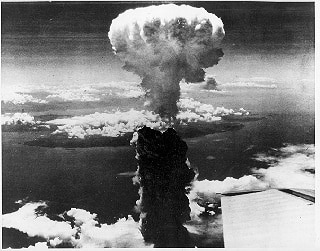Thirty years ago, I co-taught a course on the making and use of the atomic bomb at the US Air Force Academy. We took cadets to Los Alamos National Laboratory in New Mexico, where the first nuclear weapons were designed and built during World War II, and we also visited the Trinity test site, where the first atomic device exploded in a test conducted in July of 1945. It was after that first test when J. Robert Oppenheimer, the father of the atomic bomb, mused that he had become death, the destroyer of worlds. And that is what nuclear weapons are: they are death, and they can literally destroy our world, producing nuclear winter and mass sickness and starvation.
Over the last two years, the Covid-19 pandemic has killed millions of people across the globe. A general nuclear war could kill billions of people in a matter of days. As Soviet Premier Nikita Khrushchev reportedly said in 1963, “The living will envy the dead” after such a nuclear cataclysm.
Despite this, an intellectual fad of the Cold War era was to “think about the unthinkable,” to “war game” or plan for various nuclear “exchanges” resulting in the deaths of hundreds of millions of people, even to imagine that there could be a “winner” of such a war. Remarkably, in the context of the ongoing Russia-Ukraine war, that fad is returning today as pundits write articles that suggest the US needs to show the Russians it is willing and able to fight and win a nuclear war, as an op-ed in the Wall Street Journal argued on April 27th of this year.
Such suggestions are madness.
As a young Air Force lieutenant, I sat in the Missile Warning Center in Cheyenne Mountain during an exercise that simulated a nuclear war. This was 35 years ago, but I still remember those simulated Soviet missile tracks crossing the North Pole and ending in various American cities. There were no snazzy special effects or colorful high-definition computer monitors. It all happened in silence on a monochrome monitor as I sat under two thousand feet of solid granite in America’s largest nuclear bomb shelter. “There goes Kansas City,” somebody quietly said. It was a sobering experience that I’ll never forget.
Many years later, I watched a stunning documentary, The Day After Trinity, that detailed the development of the atomic bomb. I’ll never forget the words of Hans Bethe, legendary physicist and one of the bomb’s key developers. The first reaction among the scientists to the news the bomb had exploded over Hiroshima, Bethe recalled, was a feeling of fulfillment. The crash project to build the bomb had worked. The second reaction was one of shock and awe, of “What have we done,” Bethe quietly noted. And the third reaction: It should never be done again. And after Nagasaki the world somehow managed not to do it again, despite nearly catastrophic events like the Cuban Missile Crisis 60 years ago.
I was raised Roman Catholic, and I can think of no worse crime against humanity than mass murder by genocidal weaponry, not only of ourselves but of all life forms that would be vaporized by thermonuclear warheads. Let’s not think about the unthinkable; let’s not think we must show the Russians (or anyone else) that we’re willing to use nuclear weapons. Rather, let’s achieve the difficult but doable. The only sane course of action here is for all the world’s nations to negotiate major reductions in nuclear arsenals with the eventual goal of total nuclear disarmament.
William J. Astore is a retired lieutenant colonel (USAF) and professor of history. His personal blog is Bracing Views.
Reprinted with permission from Antiwar.com.


